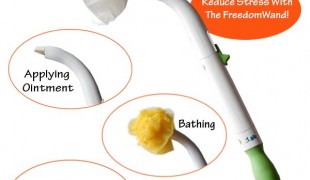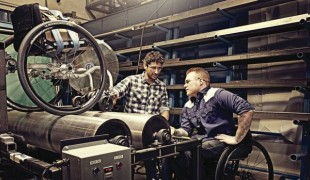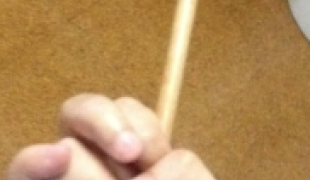- 7695
- 511
- 6
- 4
- 0
- Help Ukraine
Über die Lösung
Dieser Mann hat dieses Gerät, nachdem er sah, seine Großmutter zu kämpfen, wenn sie hatte, um ihr Haar zu waschen.
Der Enkel verwandelt einen alten Helm und einen Tank in eine Maschine. Das Gerät verwendet einen Motorradhelm, zwei Wassertanks und eine angetriebene Bedienfeld, um Wasser zu erhitzen, waschen Massage und trocknen Barnet des Benutzers.
Zuerst Wasser und Shampoo sprüht in den Helm, sanft massiert die Kopfhaut, gründlich reinigt Haar und am Ende Blow-trocknet es mit warmer Luft. Das Gerät hat die Einstellungen für verschiedene Temperaturen, die für den Benutzer angepasst werden.
Es dauerte Chen 16 Jahre und 18 gebrochen Helme, bis er diese Maschine gearbeitet hatte.
Chen hat erfolgreich das Gerät getestet, auf seinen Vater und bereits erhalten ein nationales Patent, und hofft, dass seine Einrichtung wird Millionen von Menschen, die, wie sein gran, nicht in der Lage zu helfen, oder kämpfen, um ihre eigenen Haare zu waschen.
Http://www.mirror.co.uk/news/weird-news/inventor-creates-device-wash-dry-6459926: Adaptiert
Was ist mit Ihnen, haben Sie irgendwelche Lösungen? Bitte teilen Sie sie mit dem Patienten Innovation-Community!
https://www.youtube.com/watch?v=GzPmfLKekFA
Diese Lösung enthält keinen Hinweis weder auf die Verwendung von Arzneimitteln, Chemikalien oder biologische Stoffe (einschließlich Lebensmitteln) noch auf invasive Geräte, anstößige, kommerzielle oder inhärent gefährliche Inhalte. Diese Lösung wurde nicht medizinisch validiert. Vorsicht! Wenn Sie irgendwelche Zweifel haben, wenden Sie sich bitte an einen Arzt.
DISCLAIMER: This story was written by someone who is not the author of the solution, therefore please be advised that, although it was written with the utmost respect for the innovation and the innovator, there can be some incorrect statements. If you find any errors please contact the patient Innovation team via info@patient-innovation.com
-
-
572
-
0
-
8051

FreedomWand Körperpflege & WC Aid
(SELF)-CARE: HYGIENE: Maintaining personal hygiene
(SELF)-CARE: USING THE TOILET: Using the toilet independently
Bone Disorders (Decalcification, Bone Deformity, Bone Fracture, Bone Infection)
Neuromuscular Disorders
Spinal Cord and Nerve Root Disorders
Cervical spinal cord injury/Tetraplegia
Assistive Daily Life Device (to help ADL)
Difficulty walking or moving
Muscle weakness
Difficulty coordinating movements
Stiffness or rigidity (difficulty moving)
Paralysis of the legs and lower body
Limited range of motion
Muscle pain or stiffness
Difficulty bearing weight
Difficulty standing from a seated position
Back pain
Promoting self-management
Caregiving Support
General and Family Medicine
General Surgery
Neurology
Orthopedics
Rheumatology
United States
-
-
-
498
-
0
-
7500

Icon-Rollstühle
MOVING IN A WHEELCHAIR: Moving using a wheelchair.
Paralysis
Spinal Cord and Nerve Root Disorders
Cervical spinal cord injury/Tetraplegia
Walking Aid (wheelchair/walker/crutches)
Assistive Daily Life Device (to help ADL)
Muscle cramps or spasms
Difficulty coordinating movements
Stiffness or rigidity (difficulty moving)
Paralysis of the legs and lower body
Muscle weakness
Promoting self-management
Managing Neurological Disorders
Preventing (Vaccination, Protection, Falls, Research/Mapping)
Neurology
Orthopedics
Canada
-
-
-
293
-
1
-
5850

Halten Sie sich vom Boden aufzuheben Dinge
-
 de
de